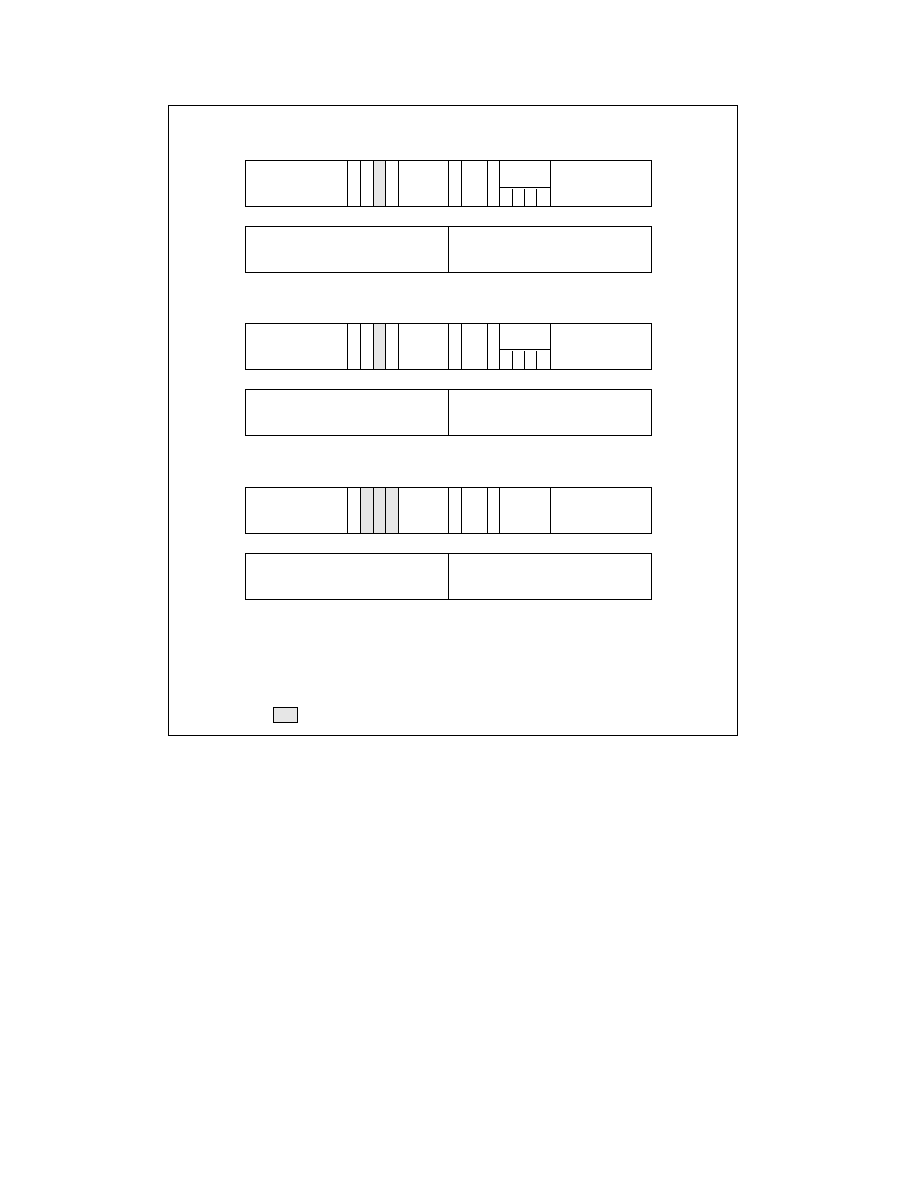
Vol. 3A 5-3
PROTECTION
Many different styles of protection schemes can be implemented with these fields and flags. When the operating
system creates a descriptor, it places values in these fields and flags in keeping with the particular protection style
chosen for an operating system or executive. Application programs do not generally access or modify these fields
and flags.
The following sections describe how the processor uses these fields and flags to perform the various categories of
checks described in the introduction to this chapter.
5.2.1
Code-Segment Descriptor in 64-bit Mode
Code segments continue to exist in 64-bit mode even though, for address calculations, the segment base is treated
as zero. Some code-segment (CS) descriptor content (the base address and limit fields) is ignored; the remaining
fields function normally (except for the readable bit in the type field).
Code segment descriptors and selectors are needed in IA-32e mode to establish the processor’s operating mode
and execution privilege-level. The usage is as follows:
Figure 5-1. Descriptor Fields Used for Protection
Base 23:16
31
24 23 22 21 20 19
16 15
13
14
12 11
8 7
0
P
Base 31:24
G
D
P
L
Type
1
0
4
31
16 15
0
Base Address 15:00
Segment Limit 15:00
0
Base 23:16
A
V
L
Limit
19:16
B
A
W
E
0
Data-Segment Descriptor
31
24 23 22 21 20 19
16 15
13
14
12 11
8 7
0
P
Base 31:24
G
D
P
L
Type
1
0
4
31
16 15
0
Base Address 15:00
Segment Limit 15:00
0
Base 23:16
A
V
L
Limit
19:16
D
A
R
C
1
Code-Segment Descriptor
31
24 23 22 21 20 19
16 15
13
14
12 11
8 7
0
P
Base 31:24
G
D
P
L
Type
0
4
31
16 15
0
Base Address 15:00
Segment Limit 15:00
0
Limit
19:16
System-Segment Descriptor
A
B
C
D
DPL
Accessed
Big
Conforming
Default
Descriptor Privilege Level
Reserved
E
G
R
LIMIT
W
P
Expansion Direction
Granularity
Readable
Segment Limit
Writable
Present
0
AVL Available to Sys. Programmers